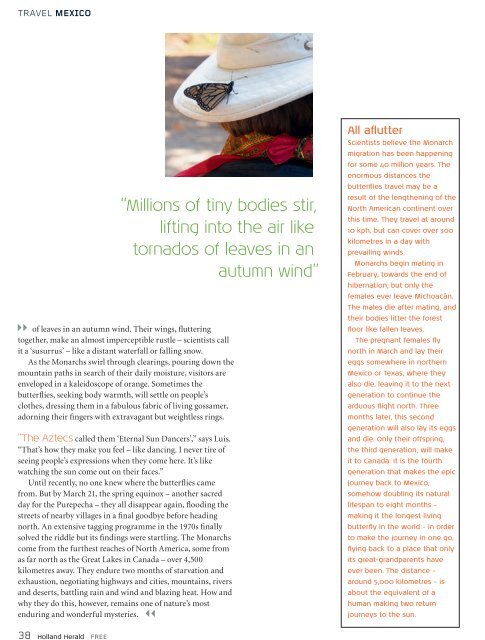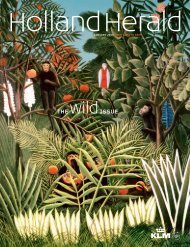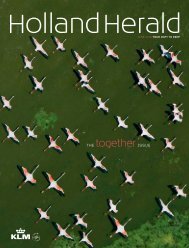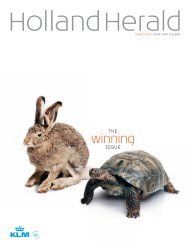may-2010
may-2010
may-2010
You also want an ePaper? Increase the reach of your titles
YUMPU automatically turns print PDFs into web optimized ePapers that Google loves.
TRAVEL MEXICO<br />
of leaves in an autumn wind. Their wings, fl uttering<br />
together, make an almost imperceptible rustle – scientists call<br />
it a ‘susurrus’ – like a distant waterfall or falling snow.<br />
As the Monarchs swirl through clearings, pouring down the<br />
mountain paths in search of their daily moisture, visitors are<br />
enveloped in a kaleidoscope of orange. Sometimes the<br />
butterfl ies, seeking body warmth, will settle on people’s<br />
clothes, dressing them in a fabulous fabric of living gossamer,<br />
adorning their fi ngers with extravagant but weightless rings.<br />
“The Aztecs called them ‘Eternal Sun Dancers’,” says Luis.<br />
“That’s how they make you feel – like dancing. I never tire of<br />
seeing people’s expressions when they come here. It’s like<br />
watching the sun come out on their faces.”<br />
Until recently, no one knew where the butterfl ies came<br />
from. But by March 21, the spring equinox – another sacred<br />
day for the Purepecha – they all disappear again, fl ooding the<br />
streets of nearby villages in a fi nal goodbye before heading<br />
north. An extensive tagging programme in the 1970s fi nally<br />
solved the riddle but its fi ndings were startling. The Monarchs<br />
come from the furthest reaches of North America, some from<br />
as far north as the Great Lakes in Canada – over 4,500<br />
kilometres away. They endure two months of starvation and<br />
exhaustion, negotiating highways and cities, mountains, rivers<br />
and deserts, battling rain and wind and blazing heat. How and<br />
why they do this, however, remains one of nature’s most<br />
enduring and wonderful mysteries.<br />
38 Holland Herald FREE<br />
“Millions of tiny bodies stir,<br />
lifting into the air like<br />
tornados of leaves in an<br />
autumn wind”<br />
All afl utter<br />
Scientists believe the Monarch<br />
migration has been happening<br />
for some 40 million years. The<br />
enormous distances the<br />
butterfl ies travel <strong>may</strong> be a<br />
result of the lengthening of the<br />
North American continent over<br />
this time. They travel at around<br />
10 kph, but can cover over 300<br />
kilometres in a day with<br />
prevailing winds.<br />
Monarchs begin mating in<br />
February, towards the end of<br />
hibernation, but only the<br />
females ever leave Michoacán.<br />
The males die after mating, and<br />
their bodies litter the forest<br />
fl oor like fallen leaves.<br />
The pregnant females fl y<br />
north in March and lay their<br />
eggs somewhere in northern<br />
Mexico or Texas, where they<br />
also die, leaving it to the next<br />
generation to continue the<br />
arduous fl ight north. Three<br />
months later, this second<br />
generation will also lay its eggs<br />
and die. Only their offspring,<br />
the third generation, will make<br />
it to Canada. It is the fourth<br />
generation that makes the epic<br />
journey back to Mexico,<br />
somehow doubling its natural<br />
lifespan to eight months –<br />
making it the longest living<br />
butterfl y in the world – in order<br />
to make the journey in one go,<br />
fl ying back to a place that only<br />
its great-grandparents have<br />
ever been. The distance –<br />
around 5,000 kilometres – is<br />
about the equivalent of a<br />
human making two return<br />
journeys to the sun.
















